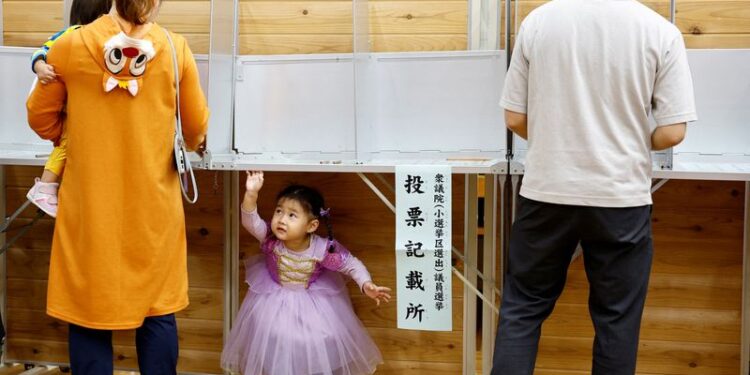(Reuters) – Japan’s Liberal Democratic Party and its ruling coalition partner may lose their majority in the lower house of parliament, raising questions about the make-up of the next government, exit polls from Sunday’s general election indicated.
The LDP has governed for almost all of Japan’s postwar period, but here are examples of times it has lost power or needed to rely on other parties.
1983
Dashing opinion polls that it would win comfortably, the LDP fell short of a majority in what was then the lowest postwar voter turnout. To stay in power, it entered a coalition with the New Liberal Club, a now-defunct party formed as a breakaway from the LDP in 1976.
In the following election, in 1986, current premier Shigeru Ishiba first entered parliament after a brief banking career.
1993
Facing a backlash over corruption scandals, the LDP again fell short of majority. Although it won the most seats, seven opposition parties – including two that had broken away from the LDP ahead of the vote – formed a coalition and kicked the LDP out of power for the first time since its 1955 formation.
Infighting led to successive leadership changes, and the coalition collapsed in less than a year.
2000
Six months before the election had to be held, LDP Prime Minister Keizo Obuchi suffered a stroke and later died. He was succeeded by Yoshiro Mori, a gaffe-prone figure who eroded the party’s popularity ahead of the vote.
In the first election since the LDP tied up with the newly formed Komeito, a party backed by a large Buddhist lay group, it relied on Komeito’s seats to stay in power. The two parties have ruled since, apart from a brief period they lost power in 2009.
2009
The Democratic Party ousted the coalition in a landslide during the turmoil of the global financial crisis.

But the Democrats’ perceived mishandling of the massive 2011 earthquake and tsunami that crippled the Fukushima nuclear plant and other mishaps allowed the LDP to regain control in the following 2012 election.
The Democrats dissolved in 2016, while the rump of the party eventually became the current main opposition Constitutional Democratic Party of Japan and a smaller group forming the Democratic Party for the People.







